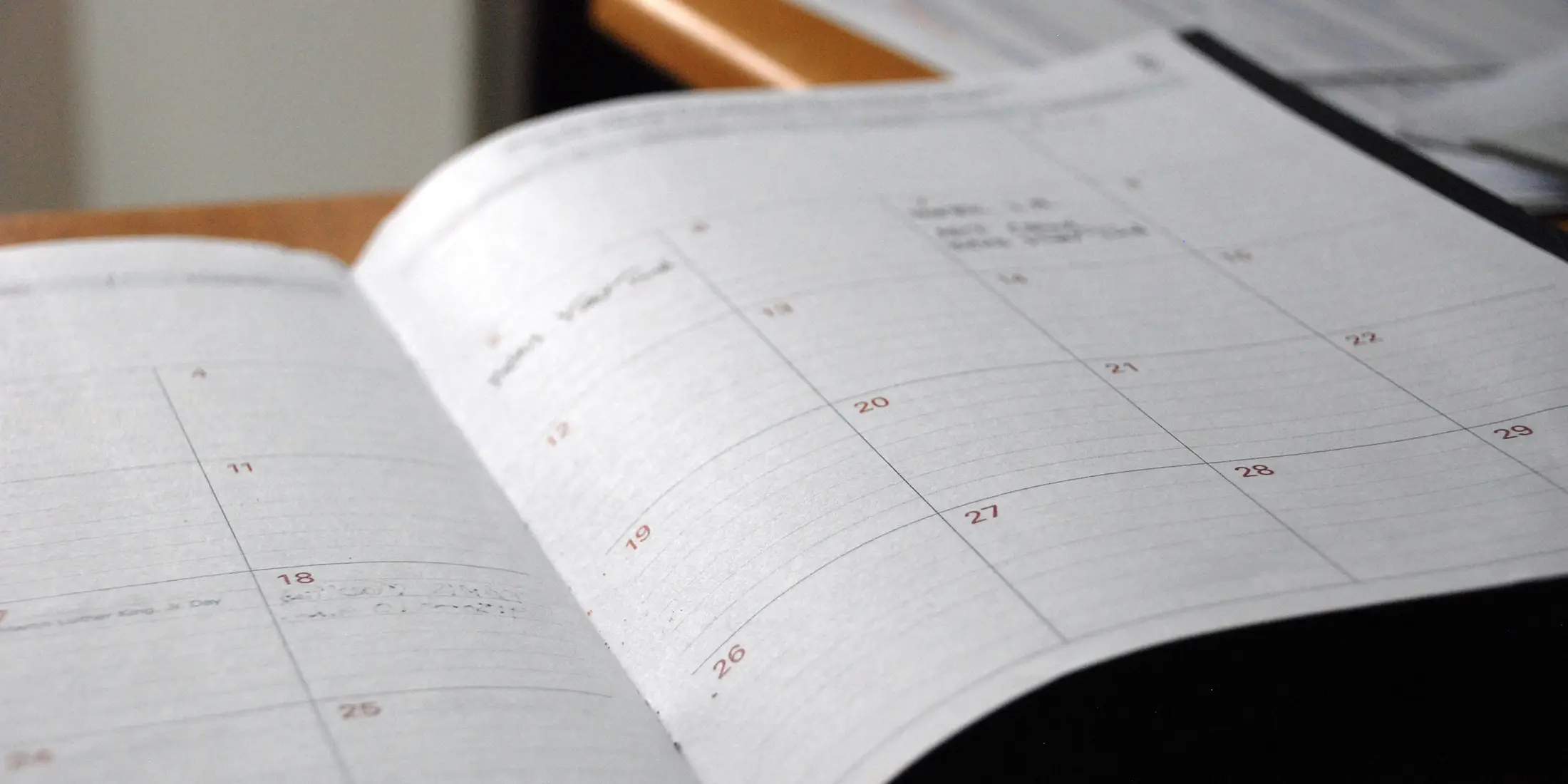(About the photo at the top of this blog post: while we take our jobs very seriously, we try not to take ourselves overly seriously — this picture is meant to convey how unpredictable this upcoming cycle will be and nothing more.)
The 2020-2021 admissions cycle is going to be the most challenging yet to predict, and most will understand a large part of that uncertainty. COVID-19 has changed the entire higher education model in so many different ways, and every day there are additional redirections — for instance, just yesterday, USC Gould School of Law reversed course from a previously announced hybrid model, instead announcing plans for a fully online platform, becoming the tenth law school to do so. With each one of these announcements — and with the recent, perplexing DHS decision stating that international students who are studying at fully online colleges and graduate schools must either transfer or leave the United States — it becomes increasingly difficult to predict the number of deferral requests and deferrals granted from this admissions cycle. There are numerous reasons to believe law schools may need to fill larger classes next cycle — which bodes well for applicants — but for similar reasons, that there may not be as much merit aid this upcoming cycle. There is also data in respect to LSAT registrations that currently conflicts with the three atmospheric reasons why applications should be up next cycle.
In short, all of this is meant to serve as a significant disclaimer. We have been pretty lucky, for lack of a better word, with our cycle predictions each year in the past. You can see them here, here and here. But there is a lot to sort through for this cycle, and I would read these predictions with that disclaimer in mind. We'll do our best to offer multiple possible interpretations of the themes and data so that readers can come to their own conclusions, and we will end with our own.
Factors that will influence the 2020-2021 admissions cycle
Increase in Deferrals
COVID-19 has naturally resulted in speculation that many admitted students will choose to defer their first year of law school to the following fall, rather than pursue online classes. The math here is seemingly simple: if more students defer their 2020 admission to start in 2021, there will be fewer seats available in the upcoming cycle, leading to increased competition.
But the math is not actually that simple. First, we don't really know how many deferrals there will be. Common sense would seem to indicate there will be more than usual. Our firm has seen an uptick in inquiries regarding deferrals, and anecdotal evidence from online postings shows at least greater interest. But exactly how much that translates into actual deferrals remains to be seen. For now, schools pledging to hold at least some in-person classes for those who want them seems to be holding back mass movement towards deferring. Harvard, one of the first law schools that announced they would be moving fully online for the fall and a school who also re-opened their deferral window post-announcement, will undoubtedly have more deferrals than normal — but other schools? More, probably, but unlikely an avalanche — we would have seen more waitlist movement if there was a flood of deferrals.
This could change if more law schools announce a shift to a fully online semester. However, many such schools have deferral deadlines that have already passed, so they would need to re-open their window to request a deferral, which they may not choose to do. We're also getting pretty close to the start of the school year, so we wonder if such announcements would result in as much movement as they might have in, say, June.
Another element to consider is that law school class sizes aren't set in stone. Generally schools have a target class size, but they can adjust it. A school that had an increase in deferrals for the 2021 entering class could theoretically respond by expanding the size of that class, which would mean the same or close to the same number of seats available. We will note that it's unlikely they will reduce class size — there is significant monetary pressure on law schools presently, and bodies in seats mean tuition checks.
Finally, any deferral movement will be largely offset by accepting students off the waitlist. These accepted students may reduce the number of individuals who would have reapplied in 2020-2021, which would be good news for those applying for the first time that cycle.
Election Year
Many folks remember, or have heard of, the infamous Trump Bump. Widely cited, there hasn't been a great deal of real study done on this topic. Kaplan did a survey which found an impact, and anecdotally many admissions officers at our firm or who we've spoken to recall reading countless personal statements discussing how the 2016 election influenced their decision to attend law school. However, any increase attributable to politics didn't show up immediately. That application cycle ended essentially flat, a 0.1% decline. That does make sense — by November 9th, much of the applicant volume for the cycle was set in stone (remember, there were fewer LSATs administered back then). The following cycle, probably more reflective of an increased political motivation to pursue law school, saw an 8.1% increase in applicants.
We don't think the entire 8.1% increase was driven by political motivation, of course. There were other factors at play — for example, the legal job market had improved substantially by then, and prospective law school students were seeing much rosier statistics about their employment opportunities. This probably helped convince many to take the plunge. Still, it would be silly to discount the impact of politics, and this factor will almost certainly increase the number of applicants this year.
Recessive Economy
There is a longstanding hypothesis that higher education is counter-cyclical. That is, as the economy does poorly, more and more students seek out education, and as the economy does well they do so less. The reasons are fairly self-explanatory — higher education can be a great way to ride out a poor job market, and it also provides credentialing and training to make job-seekers more competitive. On the flip side, when there's low unemployment, workers feel less pressure to differentiate themselves, or see a higher opportunity cost to pursuing education.
Law may not be any different, and you can see that in the "demand" for legal education following the Great Recession. The recession technically began in December 2007; however, the unemployment rate did not rise above 5% until May 2008, well after the 2007-2008 application cycle was all but concluded (typically, 90%+ of applications will be in by that point, and back then there would only have been one LSAT administration available after May, the June test). So it's not really fair to consider the impact of the recession on that cycle. But they didn't call it the "Great" Recession for nothing; the effects got worse. By November 2008, the unemployment rate had risen to 6.8%, and there was no doubt the economy was in a downturn. That also happens to be the height of application season. The 2008-2009 application cycle ended with a 5% increase in law school applicants. The economy continued to worsen for the next application cycle, with a 9.9% unemployment rate in November 2009. That year ended with a 2.2% increase in law school applicants.
Of course, many people in the law school industry know what happened next. The economy had not substantially improved for the 2010-2011 application cycle, but law school applicants declined a jaw dropping 9.9%. This seems to fly in the face of the "counter-cyclical" nature of higher education. After all, the economy was still awful. So why weren't students increasingly seeking out a legal education? Those who were around then will recall that this was when the career outcomes for law school graduates came under incredible scrutiny. Anyone applying today enjoys a wealth of reliable information on employment outcomes for graduates of a given ABA-accredited law school, but prior to about 2010, reporting on career outcomes was largely left to the discretion of the schools themselves. As you can imagine, many schools sought to report career outcomes in a way that can be charitably described as exaggerated and incomplete. But by 2010, not only had the market for attorneys declined substantially, but the effects on new graduates were becoming clear. This period was marked by intense scrutiny from both the legal community and society as a whole as to job opportunities for law school graduates. It became widely known that law school wasn't a golden ticket to job security. If anything, it was often the opposite. The American Bar Association began mandating employment outcome disclosures, which revealed the true depth of the employment problems for law graduates, and that data circulated widely. The following two years, the 2011-2012 and 2012-2013 admission cycles, saw 13.7% and 12.3% declines in applicants respectively, despite national unemployment rates continuing to range between 7% and 9%. Essentially, what the increased scrutiny on outcomes had done was show that one of the key arguments for a legal education during a recession — obtaining a job — was a faulty premise.
That's all a very long winded way of saying the following: yes, law school applications may be counter-cyclical to some degree, as we did see rising applicants during the beginning years of the Great Recession. However, there are limits on that, as seen in the period from 2010 on, when applicants declined sharply as the poor market for legal graduates became known. What does that mean for next year? It implies there will be some increased demand for a legal education in the face of a poor employment market. And given that ABA employment outcomes are reported on a nearly one-year lag, we won't know the Class of 2020 outcomes until next May at the earliest, long after the application cycle is mostly over. Applicants will be primarily judging schools on the basis of the past few years, which have seen increasingly positive markets for law school graduates. This could also contribute to a belief that law school is a great place to ride out the recession, and provide a boost to applicant volume.
How exactly the economy will recover in and after the COVID-19 era is important too. Many economic experts were predicting, or hoping, that the trend of the current recessive economy would be V-shaped — a sharp downturn followed by an equally sharp upswing. If that upswing doesn't happen, then many people will start looking for alternatives, and law school may be an attractive one in their minds.
For what it's worth, a not-very-scientific indication that demand for law school next cycle may be counter-cyclical: since May 1 of this year, 53 out of 69 days have seen an increase in the number of law school applicants compared to the same day in the prior year. Overall applicant volume grew by 12.1% over this period, compared to this period last year, when applicant volume grew by 7.7%.
Initial Cycle Data Indicators
One of the best indicators of upcoming cycle volume is the number of people signed up to take the LSAT. While a growing number of schools are accepting the GRE — and growing number of applicants in turn are using that test — the LSAT remains very clearly the primary test for admission to law school.
So where do LSAT registrant numbers stand for the upcoming cycle? As of today, about 48,614 people are/were registered for the June, July, and August LSAT administrations this year, per LSAC data. We consider the 3-test period as opposed to an individual test to avoid having a single event overly impact the analysis. This year's number needs to be further adjusted. In response to the COVID-19 pandemic, the June International LSAT administration was cancelled, and those registered were reassigned to the July FLEX exam. LSAC was very helpful in confirming that these individuals are reflected in the current July 2020 registrant count. There are slightly over 1,000 of them as of a few days ago. LSAC further clarified that international test takers are not included in prior year LSAT registrant numbers. So, any fair comparison would need to reduce the July 2020 count by these 1,000 individuals to avoid artificially inflating the registrant count, and our discussion will reflect this from here on out.

So far, we're running well behind last year in total registrations, as well as the previous 2018-2019 cycle. At present, there are about 15,566 fewer domestic registrations over this three-test period, about a 25% decline. Of course, that comes with caveats. There's still a week left to sign up for the August 2020 LSAT administration, and the days immediately preceding the deadline always see tremendous sign-up volume. We could very easily hit 30,000 or more total registrants for that test. There's been steady sign-up volume for that test since registration opened, and yesterday alone had over 700 registrants.
Still, 30,000 August registrants would leave us well short of the prior two application cycles. It's also important to remember that our July 2020 numbers aren't final either. In the days immediately before the test, there are always significant volumes of last minute withdrawals — sometimes as many as 1 in 5 registrants withdraw last minute. It's pretty conservative to expect between 1,000 and 2,000 registrants will withdraw between now and when the test begins, which will somewhat dilute the data impact of continued August sign-ups.
So based on those considerations, here's a look at how registrants for these three LSATs might compare two months from now:

In this scenario, we're still down from both 2018 and 2019, but less substantially — a 13% decline instead of over a 25% decline compared to last year.
Of course, early LSAT registrants are an incomplete data point at best, and there are a great number of other factors. The share of first-time test takers (likely to be very similar to last year, but we will see) is important. There could be substantial registrant volume for the October LSAT and other later tests. And the ratio of LSAT takers to applicants changes every year — it seems, for example, that in 2019 a greater proportion of LSAT takers ended up actually applying to law school than in 2018. Capturing a larger share of the LSAT pie, so to speak, could make up for shrinkage in the pie itself. Anecdotally, many applicants we have spoken with have indicated that they would prefer to take the in-person, traditional format LSAT rather than the LSAT Flex, either due to process concerns or the lack of a second Logical Reasoning section, so more applicants may be waiting for later LSAT dates than usual, even if they're otherwise prepared to take the test.
It's easy to see how incomplete registrant numbers can be just by looking at 2018 and 2019 applicants versus LSAT registrants over this period. There was a 7% decline in LSAT registrants from 2018 to 2019 in the June-September period. Despite that, we will probably end this application cycle with a decline in LSAT applicants of only 1.5% to 2% — basically flat compared to a 7% decline, which would be quite large.
And that doesn't even touch the elephant in the room factor for why this year's numbers may not be comparable to last year's: COVID-19. In the midst of a global pandemic and economic crisis, it's impossible to 1:1 compare with prior years' data. Still, it's a somewhat positive sign for 2020-2021 applicants in the sense that it's not outright bad news.
As for other cycle indicators, we'll unfortunately be unable to consider LSAC forum attendance, as for obvious COVID-19 reasons those have either been cancelled or moved online, making attendance volume impossible to compare.
We also won't be able to measure GRE test-taker volume since that test is used for so many admission programs. However, the GRE could certainly have an impact on cycle volume. A growing number of law schools accept it as a valid test for admissions, and the number of applicants applying without an LSAT (i.e. likely with the GRE instead) has grown. Last cycle, at this point, 3.7% of applicants were not using an LSAT; it's 5.4% this cycle. We expect that number to continue to grow, and that could absolutely increase total applicant volume next year.
Our Prediction
Enough with the disclaimers, historical backdrop, and data parsing. What does this all mean? Despite the low LSAT registrant numbers thus far, we think applications will be up, and our best guess is about 5-7%. But, they may not be up early, thus making applications submitted before Thanksgiving particularly valuable to applicants. This podcast we did a few years back remains very relevant here.
Part of this guess is because the economic recovery may very well look more like a W, or some messed up elongated U, rather than a V as originally hoped — meaning there may be a influx of later applicants as economic pressures push more and more people towards considering law school. The election results, whichever way they tip, should also have some influence on post-November applications.
This does not necessarily mean the cycle will be more competitive. The need for increased revenue at law schools (and in higher education generally) is real. For 20+ years I have seen predictions of law schools having to admit larger classes or decrease tuition remission (merit scholarships) for financial viability, and for 20+ years we have yet to see this at the macro level. If that ever changes, it will be in the next year or two. Law schools have been tuition- and central university-dependent for capital infusions, and we don't see how most universities will be able to continue their financial support of law schools with COVID-19 and the 2026 Demographic Cliff both severely changing their way of operating.
This may mean larger class sizes at many schools, which is good for applicants hoping to get in, though not necessarily great for job prospects. It also may mean less merit aid. When you look at line item expenses for law schools, the first two that pop out are faculty salary and tuition remission, a.k.a. scholarships. We've talked about this before — every year schools increasingly use scholarships to woo high-stat or otherwise desirable applicants. It's reached a point where almost three-quarters of law school students are getting some kind of tuition discount:

It will be hard for schools not to reduce such remission if they want to stay budget positive. Such potential reductions make it even more beneficial to apply early, before potentially depleted merit scholarship budgets are exhausted.
Ultimately, we are predicting slightly more applications and likely less merit aid, but not necessarily a more competitive cycle. But look at the photo at the top of this article one more time. Anything can happen this coming cycle, and I would be very hesitant to believe anyone who makes predictions for this coming year with absolute confidence. And while these blogs are fun for us, it shouldn't really change how you apply: create the very best application possible, and shoot your shot.


.png)





